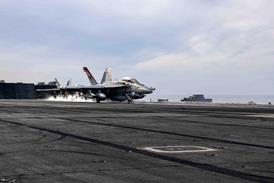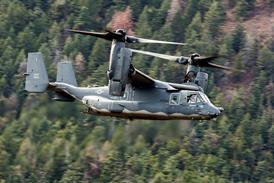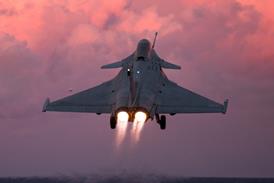BAE Systems' Coyote unmanned air vehicle could be flying into tropical storms later this year, after completing a 49min flight test involving the US government's National Oceanic and Atmospheric Administration (NOAA) in the third quarter of last year.
Initially US Navy-funded, the expendable Coyote is 0.91m (3ft) long, has a 1.47m wingspan and weighs 5.9kg (13lb), including a 0.9kg maximum payload. Sonobuoy-deployed from up to 20,000ft, the Coyote emerges from its casing in freefall, unfolds its wing and stabilises for a 60kt (111km/h) cruise speed. The goal is for 1h endurance at 60kt, and battery improvements could see a 50% increase.
A meteorological sensor is being developed for the NOAA, while the USN variant uses an infrared or electro-optical package for intelligence, surveillance and reconnaissance missions.
 |
|---|
© BAE Systems |
Last year's NOAA-enabled flight was a demonstration for the agency, which wants the Coyote for hurricane and tropical storm research. Deployed from its Lockheed WP-3D Orion fleet, the Coyote could fly a pre-programmed course, but also has the capacity for line-of-sight operation from the release aircraft.
"Small unmanned aircraft systems are important tools that can help improve our understanding of the environment," says NOAA Coyote project manager Lt Cmdr Nancy Ash.
Originally developed by Arizona based-Advanced Ceramics Research (ACR), an earlier version of the Coyote was first launched from a Beechcraft C-12 Huron in 2007. Plans for a third quarter 2008 launch from a USN P-3 were cancelled, with repeated aircraft availability problems ending test hopes. BAE bought ACR in 2009.
Source: Flight International























